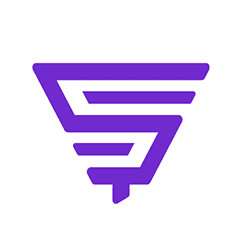 These days, social media and aggregators, like Google for Jobs and Indeed, often send candidates right to the job description page. As a result, they may have limited knowledge of your employer brand, company culture or the career and advancement opportunities at play.
These days, social media and aggregators, like Google for Jobs and Indeed, often send candidates right to the job description page. As a result, they may have limited knowledge of your employer brand, company culture or the career and advancement opportunities at play.
Attracting a candidate is one thing. Now, how do you get them engaged, and keep them engaged? It begins with enhanced job descriptions that warm the candidate to your employer brand and showcase your employee value proposition. That's where all-important personalization comes into focus. While conventional wisdom favored a "more is more" approach to job descriptions, we've learned it's better to deliver an interesting, compelling candidate experience, one that serves up informative content, contextually, for job seekers.
Taking a top-down approach
Your goal? To prioritize the page so the user does what you want them to do, while engaging them further with information they find useful. In addition to getting them to apply for the job, you want them to interact with your site so you can drop them further into the funnel. Once they do, technology captures valuable data. Their clicks let you, and machines, glean details about what's driving them, what their interests are and what their behavior is likely to be.
Your page should begin with a concise, scannable and clear job description with a prominent call to action, the "apply," should weave in experiential, day-in-the-life descriptors that introduce, reinforce or leverage your employer brand. You want the candidate to feel what working for you is like, and you want it to resonate that they should. Then, when they apply, you can capture their contact, resume and any required compliance data.
Dropping them into the funnel
Remember that your enhanced job description page is often a "cold call" replacement for a career website landing page. After the job itself, the page should offer "also near you" jobs that get the candidate to interact further with the site. Their clicks give you permission for more content (and capture relevant data to drive future personalization of content). Always consider the user experience, and ways you can make it a pleasant one.
Because you want to drop them down into the funnel, your third bucket on the page should be valuable content, content that feels tailored to the candidate. This includes a compelling piece about a job they're applying for, other career paths they might be interested in, and what the experience of working for your organization is like. It's a great chance to ignite your brand using employee advocacy. Picture, for example, a "day in the life" video, told by an employee, that speaks to your work culture, your support of work-life balance or the difference your organization makes in the world at large.
Google Cloud Talent solution drives personalization
In order to enhance future engagement on the site, Symphony Talent partnered with Google Cloud Talent Solution. Combining machine learning-driven application program interfaces (APIs) and Google's search results to improve search performance and conversion, we're able to deliver high-quality results to job seekers.
APIs, a set of routines, protocols, and tools for building software applications, specify how software components should interact. When a candidate initiates a job search, Google Cloud Talent Solution goes beyond the limitations of typical keyword-based methods, taking into account the role level, jargon, abbreviations and acronyms, and misspellings. Because the job search capability leverages machine learning, they continue to improve over time, the more a candidate interacts with the page.
The level of personalization you can achieve using information about past searches, saved jobs and previously looked at jobs Ñ as well as small interactions (like "Hi Jen" on the page header) are tools that help candidates feel welcome, while encouraging them to further engage with your employer brand.
Personalization for the overarching win
All of the data you've obtained can now be used to grow your talent pool, too. CRM engages candidates (and employees) through automated communication and also maximizes lead generation through advanced search, smart folders and AI recommendations. When candidates are entered into living, breathing smart folders, for example, you can later draw from skilled, relevant candidates at will. Those same prospects can be entered into a drip campaign that automatically, at prescribed intervals, reaches out on your behalf, sending tailored, useful content to a potential candidate. Depending on how they interact with the emails they receive, technology customizes the next steps based on what's been observed.


